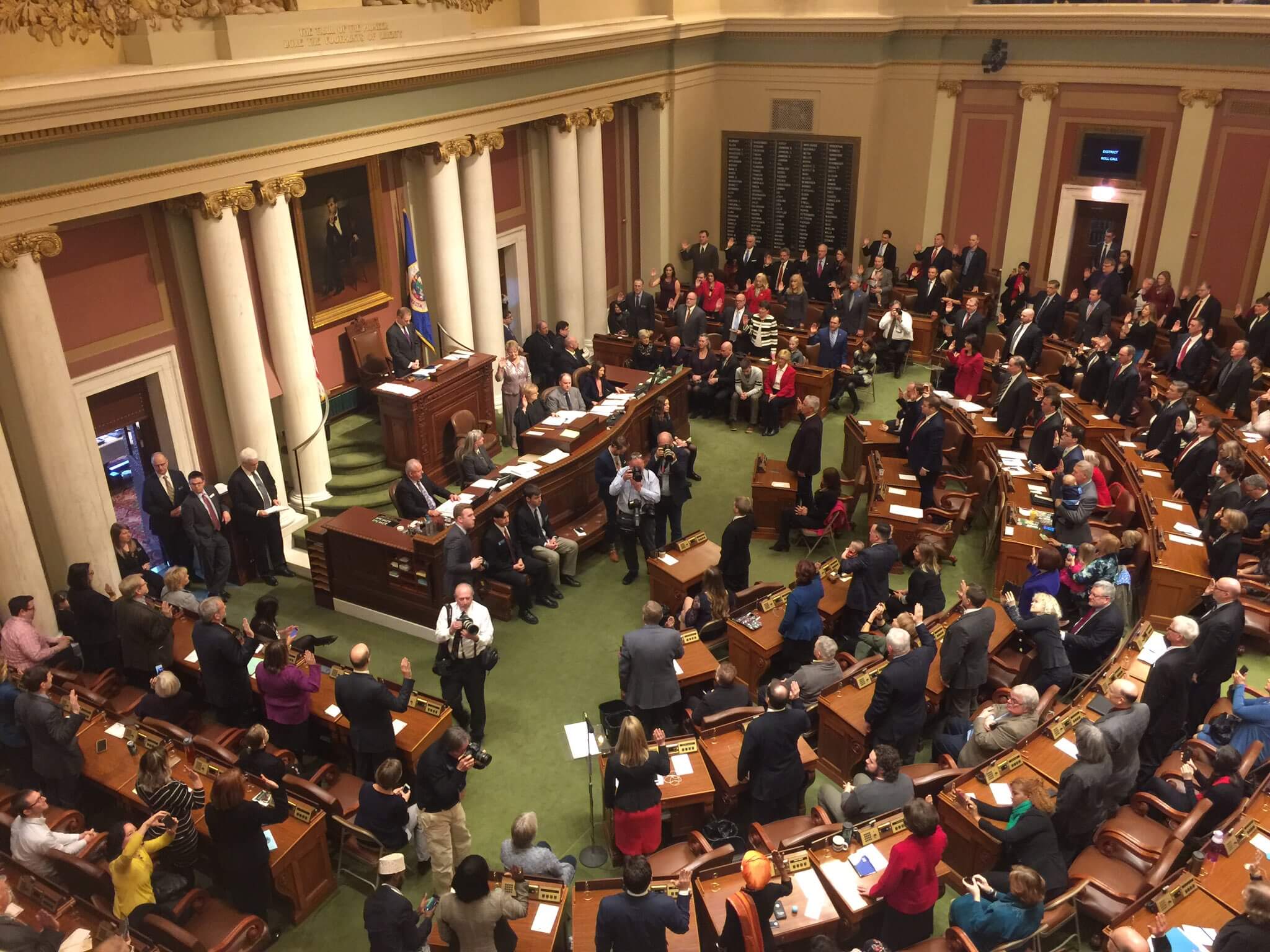 Reading Time: 3 minutes
Reading Time: 3 minutesWritten by John Himle
In late December I remarked in this space how the 2016 election would be one for the history books. If the first few weeks of 2017 under the capitol dome are any indication, then this legislative session may likewise become one for future study.
Before the opening gavel and through the first few weeks of the session, both the Governor and Legislative leaders voiced strong opinions about the health insurance crisis looming in the state’s individual marketplace, which directly impacts many Minnesota farmers. By Jan. 26, a final bill passed the House and Senate and was quickly signed by Gov. Dayton. It will spend $326 million to help buy down the cost of premiums for insurance obtained through the private market exchange. The law also enables farmers to form health care cooperatives, which can further benefit farm families. Of course, if lawmakers do not soon tackle the underlying issues causing premium hikes, many of the remaining private insurers may decide to leave the market altogether, leaving rural families in health care limbo.
Capped by the health insurance premium bill, the week of Jan. 23 belonged to the Governor. During his State-of-the-State address on Monday evening, he fainted, hitting his head on the lectern, but fortunately he quickly recovered. The next day it was revealed he had been diagnosed with prostate cancer. In typical style, the governor displayed his self-deprecating side and said there would be no disruption in his work. Largely overlooked during the events this week was the release of his proposed state budget for 2018/19 and the undelivered State-of-the-State remarks that supported it.
Gov. Dayton proposes to spend approximately $46 billion over the next two years, a ten-percent increase over the current budget. The governor’s plan would spend a significant portion of the current $1.4 billion budget surplus to pay for increases in school spending and more money for a public health care option. He also renewed his call for a 6.5-cent gas tax as well as an increase in vehicle registration fees to help pay for long-term transportation plans. (MCGA recently passed a resolution to support a gas tax increase) Republicans have avoided the use of hyperbole thus far when discussing the governor’s plan but it is clear they do not favor tax increases or massive new spending. A legislative budget should begin to emerge from the House after the final budget forecast in late February, at which point we will learn more about the differences between the Republican and Democratic visions for the future of Minnesota.
Dayton’s budget also calls for tax relief and singles out farmers and parents paying for childcare as key recipients of relief. Not surprisingly, Republican legislators are calling for more tax cuts in light of the ongoing budget surpluses and tax increases that were imposed in prior years.
Both the Governor’s and recent legislative actions bring me back to the primary point of my last post: Elections matter because they have a powerful impact in shaping mandates. Policy makers appear to have grasped one of the most significant mandates from the Nov. 8th election and are paying closer attention to rural issues and voters. This is good news for farmers and ag organizations, but ultimate success will depend on the level of advocacy and engagement that legislators hear from voters back home.
John Himle, Founder and CEO of Himle Rapp & Company, Inc., will be providing updates on the blog throughout the legislative session on issues important to Minnesota agriculture.


